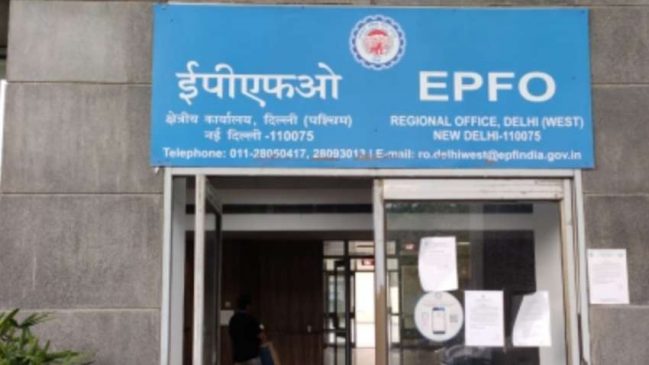Over 17 months and counting. That’s how long members of the Employees’ Pension Scheme (EPS) have been waiting to see the implementation of the November 2022 Supreme Court ruling on higher pension. While they still have hope, there is little clarity on when the apex court’s ruling will be implemented by the Employees’ Provident Fund Organisation (EPFO), which has been processing hundreds of thousands of application forms.
In all, the EPFO had received 1.75 million applications for higher pension. This includes about 410,000 applications from pensioners who had retired before September 1, 2014, and another 1.34 million from members under the joint option (where their salaries exceeded the cap of Rs 15,000). By December 2023, about 1.17 million applications were still at various stages of validation by employers and it is unclear how long it will take to process these. EPFO, the retirement fund manager, had also sent out more than 42,000 demand notices for additional payment by members opting for higher pension to deposit funds to meet payments for past dues. “The first leg of the process—submitting applications—is now over. The EPFO is understood to be processing these applications. Members whose applications are found in order in all respects should hear about the amount to be transferred from the EPF account to the EPS sometime soon, if [they have] not heard so far,” says Kuldip Kumar, Partner with tax consulting firm Mainstay Tax Advisors.
Read More: EPF transfer: How to transfer provident fund online? Step-by-step guide here
But on the ground, there has been little progress, leaving many pensioners and subscribers—as well as employers—with an uncertain future. “The delay in implementation with regard to the post September 1, 2014, cases has been very long and many pensioners are suffering because of this. Some have passed away in the interim without getting the benefit,” says pension activist Parveen Kohli. He claims that the method of calculation of higher pension for these retirees has led to the quantum of pension being reduced substantially and many petitions have been filed in the high courts over this.

Kumar notes there may be old records involved, and it needs to be seen how these applications would be disposed of for discrepancies. “There might even be cases where employers could not validate and verify the old records in the absence of details,” he says, adding that he has seen cases where employees changed jobs and their accumulated PF was not transferred to their new account, or where employees lack complete details; now those employers have shut their businesses or have been taken over by other firms. “EPFO should provide some help to such employees or even consider alternative methods of verification,” he says.
Several companies and employers’ associations have also been in touch with the EPFO to clarify the processes and ascertain when the higher pension will be implemented, and the retirement fund manager has also been working with them to explain the procedures.
Read More: EPF Account Closure: Know Eligibility Criteria, Process And Documents Required
What was the genesis of the issue? For that, one needs to go back in time.
EPS, launched in 1995, is under the EPFO that runs the provident fund scheme for the formal sector. In establishments that have 20 employees or more, both the employer and the employee are mandated to pay 12% of the basic salary capped at Rs 15,000 per month to the EPF. Of the 12% of the employer’s share, 8.33% is diverted to fund the EPS. The centre also contributes 1.16% of the monthly wage. A member of the EPS qualifies for pension after 10 years of service or on attaining the age of 58 or 60 years. The pension to be paid is based on a formula of the period of service and the pensionable salary. But a minimum monthly pension of Rs 1,000 is guaranteed to all eligible members. By the end of FY23, the EPS had 7.56 million pensioners and it had disbursed Rs 21,796.85 crore, including pension and withdrawal benefits, that fiscal.
The scheme was amended in September 2014 with what experts believe was an aim to expand the coverage and ensure higher contributions, as it was running at a projected deficit. The amendment changed the cap on monthly salary to Rs 15,000 from the earlier Rs 6,500, and allowed members along with their employers to contribute 8.33% of their actual salary (if it exceeded the cap) towards EPS. It gave all EPS members, as on September 1, 2014, six months to opt for the amended scheme. Employees, who opted for the amended scheme, were also required to contribute 1.16% of the monthly salary exceeding Rs 15,000 towards the pension fund.

Read More: EPFO introduces auto claim settlement for education, marriage, housing
The amendments were contested across states by members as there were many who could not opt for the new benefits. The Supreme Court in 2022 upheld the 2014 amendments, enabling subscribers to opt for higher pension, but struck down the member contribution of 1.16%. The apex court also gave four more months to eligible subscribers to opt for higher pension.
Since then, much water has passed under the bridge. The EPFO has issued a number of detailed circulars advising subscribers on how to apply for the higher pension and even extended deadlines several times to help them procure the required documentation. It has also released nine FAQs to guide subscribers on the process, a pension calculator for them to assess the higher monthly pension they can get, held over 3,000 meetings and has initiated the process of validating the applications it has received. An actuarial exercise is also on to assess the impact of higher pension on the EPS, which has been running at a projected deficit for years. But given the huge numbers at stake, it has not been a simple exercise.
“The EPFO is trying to fast-track the implementation of the Supreme Court ruling but it can make or break the EPS corpus. We are holding multiple generations of PF members’ money and all—current and future members—are stakeholders. We need to protect the EPS to protect all their interests,” says Sougata Roy Choudhury, Executive Director of CII and a member of the EPFO’s Central Board of Trustees (CBT).
A big concern is the projected deficit in the EPS and the impact of the higher pension payout. According to the actuarial valuation for FY18 and FY19, the EPS had a deficit of Rs 37,326.94 crore, up from a deficit of Rs 15,531.91 crore in the combined actuarial valuation for FY16 and FY17, respectively. While the EPS has not had any cash flow problems till date because it has had more receipts than outgo since inception, there is a projected deficit due to declining contributions by members, and the increasing number of pensioners under the scheme.
CBT, the apex decision-making body of the EPFO that is chaired by the Union Labour & Employment Minister Bhupender Yadav, has been regularly reviewing the implementation of the ruling.
In a status report, the EPFO had underlined that it has been its “constant endeavour” to process the applications expeditiously, while ensuring consistency and accuracy, and providing ample opportunity to members and pensioners. It also highlighted that there were various dimensions to this task, including the fact that many employees, pensioners and employers have sought additional time to furnish requisite details and clarifications.
To assess the impact of higher pension on EPS, an actuary has been appointed specifically for the purpose of evaluating the impact, it had said, adding that this can be done once all applications have been processed. Interim actuarial evaluations will continue for every 50,000 demand letters issued. Further, as much as 52% of the higher wage cases pertain to exempted establishments or privately managed PF trusts, which pay only a nominal fee to the EPFO, and it had called for increasing the charges.
It had also highlighted the huge burden on its workforce noting that a large proportion of applicants permitted to opt for higher pension are in service and the EPFO’s work on this will have to continue. “Therefore, there is need for separate staff for pension work in the head office as well as those in the field,” it had said, adding there was a need to set up an in-house actuarial team.
The EPFO did not respond to an emailed questionnaire from Business Today on the issues.
Harbhajan Singh Sidhu, General Secretary of trade union Hind Mazdoor Sabha and a member of the CBT, notes that there is slow progress in scrutinising the applications as the EPFO does not have adequate infrastructure. “Officers are overburdened, and the existing staff does not have the time to scrutinise so many applications. A separate division is required for this,” he says, adding that the EPFO had about 9,000 vacancies, or about 40% of the sanctioned positions, of which about 4,000 have been filled up recently.
Meanwhile, there also continues to be a long-pending demand to review the minimum monthly pension of Rs 1,000, which was fixed in 2014, with pensioners and trade unions calling for at least doubling it. However, since the centre has to pay a subsidy for this pension, it has not been in favour of such a move.
For now, it seems unlikely that these problems will be addressed at one go and stakeholders note that any conclusive move will take place only after the General Elections. But resolving the issue while ensuring the stability of the scheme could go a long way in the objective of providing social security to its workers.





































